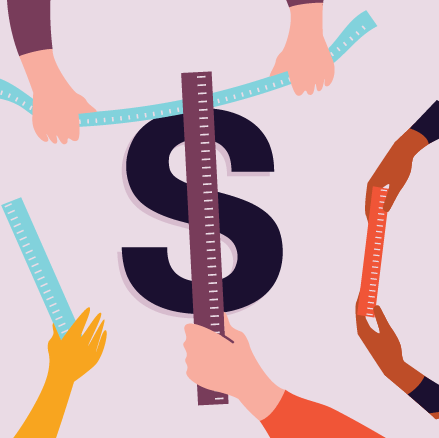It’s a bind all event creators experience: You have no idea how much to charge for your ticket.
After doing some research on pricing in your area, you put together a number you think might work. But is it the right one? And how can you tell? Unfortunately, it’s one challenge that doesn’t always get easier the longer you’ve been in the industry. And like many event planning challenges, it’s one you can’t solve with a one-size-fits-all approach. It takes experimentation, market research, and trusting your gut instincts to get pricing right.
How your ticket price impacts attendees’ perception of value
Pricing is tricky to get right because it directly influences attendees’ perception of your event’s value. Too expensive and they could be put off, but if you price too low, they may assume your event is less valuable than it is. Not only that, if you price too low, less people are likely to actually show up, even if they already have tickets. After all, they’re not losing much money (or much perceived value) by sitting it out.
That’s why, if your event is free, charging for your event will likely decrease your no shows. Some event creators have actually found that the higher the ticket price, the better the attendance rate.
To tackle this perception in your ticket pricing, a value-based pricing model can help you generate the best return from your event. Let’s take an example from the real world. A successful event organiser — let’s call her Amy — puts on food and wine festivals around Australia. After many events, Amy decided to create a new “Early Access” ticket type. It didn’t come with all the perks of the VIP ticket, but did allow customers early entry to the event if they paid a higher price. By adding this new class of service, Amy was able to capture more revenue, and deliver more value to those customers who cared about arriving ahead of the crowds.
How can you understand these results in terms of value-based pricing? Attendees who saw more value in the “Early Access” ticket type were willing to pay more for that benefit. Just as importantly, other attendees who did not value that benefit paid a price more in line with their perception of value. Both groups of attendees paid less than what they perceived the event was worth.
Amy was able to provide the extra value in this additional ticket type at a very low incremental cost, as the event was already set up and vendors were already present. The fact that early access didn’t cost Amy anything was irrelevant to the attendees. Instead, they were evaluating the price based on the value they perceived, not the cost to Amy, or whatever competitors were willing to charge. So, she found a way to deliver more value to her attendees, and have her attendees pay for that extra value at little-to-no extra cost to her. This is the exact outcome that thinking about your event from a value-based perspective should deliver.
How to use a value-based pricing model to price your tickets
There are three key components to value-based pricing:
- Perceived value
Perceived value is what the customer thinks they will get out of your event. Here it is perception, as much as reality, that drives the transaction.
- The actual price
The actual price — which can be greater or less than the perceived value — is what the customer pays. Ideally, the actual price is as close as possible to the perceived value, without going over it. When the actual price is below the perceived value, you’ve created what is known as “consumer surplus,” or the excess value the consumer gets above the actual cost of the good. - The cost per ticket for the event
Finally, there is the per ticket cost to you for putting on the event.
Taken together, these three components give you a full picture of the underlying economics of your event. In the value-based pricing model, your customer is comparing perceived value and price — and you’re using your cost per ticket to determine the baseline price for breaking even. Put simply, if the customer’s perceived value is higher than your ticket price, then your customer will decide to purchase. And if your cost per ticket is lower than that price, you will make money.

How to Price Your Event
Full transparency: There’s no magic number to nail the right ticket price. But there are strategies like this one that you can use to get close. Whether you host a large food festival, a small workshop, or a bar crawl, your event has real value. Download this free guide to help you find a price that reflects it.






